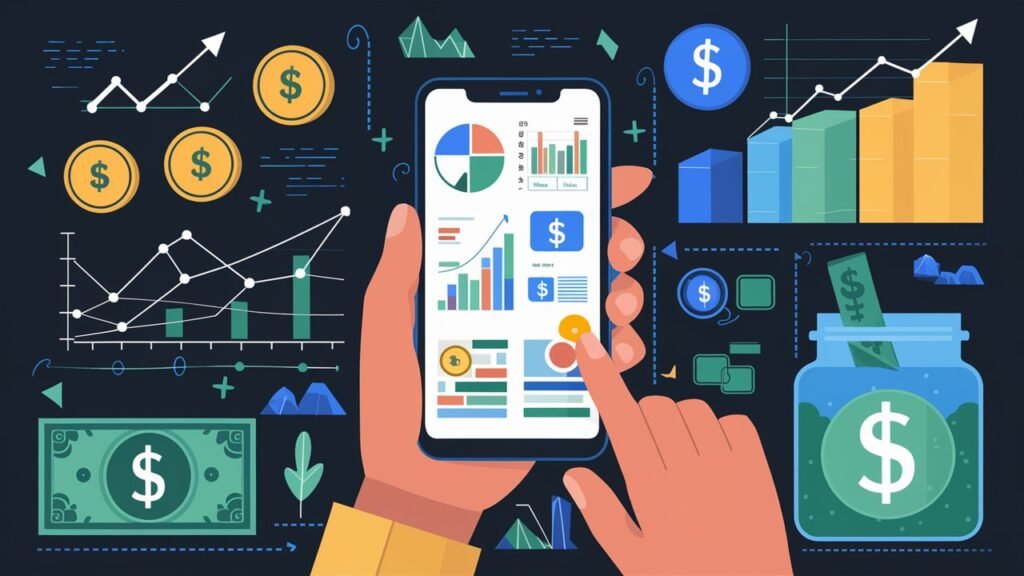
INTRODUCTION
In life, the ability to control one’s finances is an essential skill that helps with expenditures and creating a secure future. By understanding budgeting, saving, and investing, individuals can navigate financial challenges more effectively and work toward their long-term goals.
eats a safe environment for the future. It is acceptable not to have a strict budget, but if there is none, people may spend beyond their means and not save enough. This is where budgeting software comes into play by being a fast and easy solution to self-restriction of financial behavior.
Such applications do assist you in managing your finances but mostly help you in setting goals, saving biannually, or estimating finances sensibly. It does not matter if you want to clear off debt, make a large purchase, or if you simply wish to optimize your cash outflows; in all cases, a budget-tracking application can help you greatly.
In the articles above, we are going to discuss everything there is to know about budgeting software. From picking a budgeting tool to installing it and utilizing its features, we’ve compiled some hints and tips that would make the process enjoyable and effortless for a user that is new to budgeting. Let us take the first step towards being financially successful!
Section 1: Understanding Budget Tracker Apps
Apps Olan Trekker budget to include: expense tracker, sponsor budgeting software, app sponsor saving planner, and extreme financial assistance. Which provides a central hub for financial control and makes budgeting tools easier and less daunting to people who have just started learning how to budget.
To deepen your understanding of budgeting, consider reading highly-rated books like this one on personal finance and expense management.
What Are Budget Tracker Apps?
Budget tracker apps are mobile or desktop applications that allow users to monitor their income, expenses, and savings in one place. These apps often include features like customizable budget categories, real-time updates, and visual insights through charts or graphs. The primary goal of these apps is to make financial management accessible, even for those with little prior experience.
To explore some of the best budgeting apps that can help simplify financial planning and improve money management, check out this comprehensive guide to the best budgeting apps provided by The Times Money Mentor.

Benefits of Using Budget Tracker Apps
• Helps in Tracking Expenses: Expense budget apps automatically and categorically recording and track your expenses, so you will always know where your money is going
• Detects Spending Patterns: From the information given on the spending habits of the individual, you would be able to tell areas to reduce spending and improve one’s finances overall.
• Makes Saving Goals Easier: A lot of apps have savings goal-setting applications that allow users to see how much money they have saved versus where they would like to be.
If you prefer a hands-on approach to budgeting, a budget planner like this one can complement your tracker app and help you stay organized.
How Budget Tracker Apps Work
For a more in-depth understanding of the advantages offered by personal finance apps, check out this insightful blog post on the top benefits of using personal finance apps.
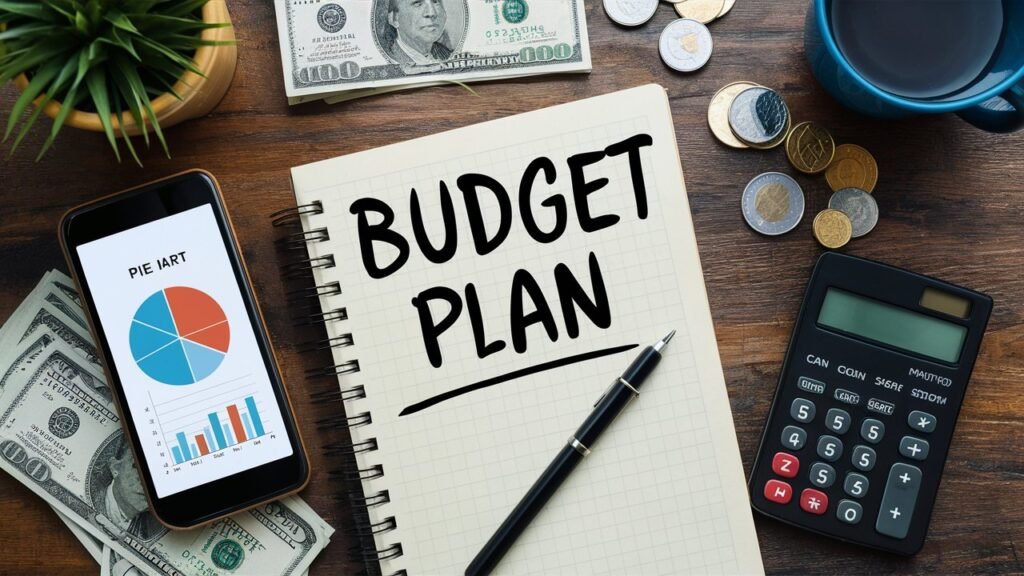
How Budget Tracker Apps Work
Most budget tracker apps work by linking oneself to bank accounts, and credit cards, or manually putting in what one spends and classifying the defined or user-defined categories of spending. Then, the application is able to report the economic behavior in visual report form which would be by bar graphs or pie charts. Thus, it would be useful for decision-making regarding one’s own spending and saving habits.
A budget tracker app may be that turning point for a novice in finances to make sense of things Clear, plus the efficient and necessary tools to help make a solid financial footing.
A budget tracker app may be the turning point for a novice in finances to make sense of things clearly, offering efficient and necessary tools to help establish a solid financial footing. For a deeper dive into how budgeting apps can enhance financial management, check out this detailed article on MoneyControl.
Section 2: Choosing the Right Budget Tracker App
On the critical function of the applications in selecting an effective and sound budgeting programmer, it should be the focus for beginning users.
Key Features to Look For in Budget Tracker Apps
Make sure its usability is friendly to new budgeters: if you’re intimidated by the interface, you’ll never want to touch it again. Your data should be safe, so pick apps whose premise includes secure financial information protections through means like encryption. Automatic tracking of your expenses will be a real breeze if you sync with bank or credit card accounts. Generous reporting tools can support you in the visualization of your spending patterns and follow your process toward your financial goals.
If you’re looking for recommendations, check out this list of the best budgeting apps compiled by CNBC Select.
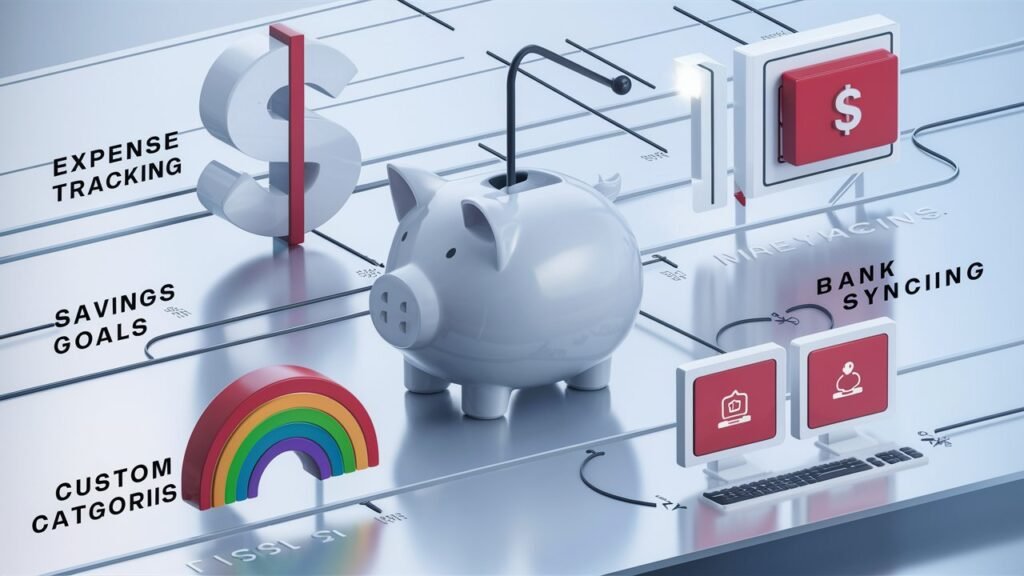
Best Budget Tracker Apps for Beginners
1. Mint: Mint is useful because it syncs to your financial accounts automatically. Mint has complete insight into your finances.
2. YNAB (You Need a Budget): YNAB is built on some proactive budgeting principles, allowing the user to allocate funds to specific categories while establishing saving priorities.
3. PocketGuard: This app is an easy way to manage a budget by tracking income and bills against expenses along with the amount of “pocket guard” money left in the pocket.
Free vs. Paid Budget Tracker Apps
Free apps are great for beginners, providing rudimentary features for expense tracking and budgeting without charge. Paid apps emerge almost always with advanced features, like customized reports, debt management tools, and personalized, one-on-one support. If you’re looking for a comprehensive guide to choosing the right budgeting software, check out this detailed guide on budgeting tools by CHOICE. Decide what level of detail and control you want based on your potential choice.
How to Test an App Before Committing
Many apps allow free trials to test features before committing to one. Make sure it’s compatible with your device, and see if tutorials exist that will show you how to use them. This hands-on approach can help in deciding whether or not you really need the app.
For better management of receipts and expense documentation, a receipt organizer can be a helpful addition to your budgeting routine.
Section 3: Setting Up a Budget Tracker App
Step 1: Gather Your Financial Information
Before beginning, collect all your financial information. This information consists of your bank accounts, income information, and any recurring expenses such as subscriptions, bills, or loan payments. These details will provide a clearer picture for getting started on the way to establishing your budget.
Step 2: Define Your Financial Goals
Establish what is the reason for your budgeting. Be it creating an emergency fund, a plan for a vacation, or repaying debt, once you have established any goals that will steer the way your budget is distributed. Having such focus will give direction in tracking the attainment of your priorities.
Step 3: Personalize the App to the Way You Work
You personalize the app according to your lifestyle. Set categories for your expenses (for example, groceries, entertainment, and utilities) and create limits for those categories. Establish reminders for all bills to be paid and savings goals to help you avoid slip-ups and overspending.
Step 4: Link Your Accounts or Enter Manually
You can either connect your accounts for automatic tracking or enter data manually. Automatic tracking would simplify the task, while manual entry allows you control. Balance the two options against convenience and security to find out which works best for you.
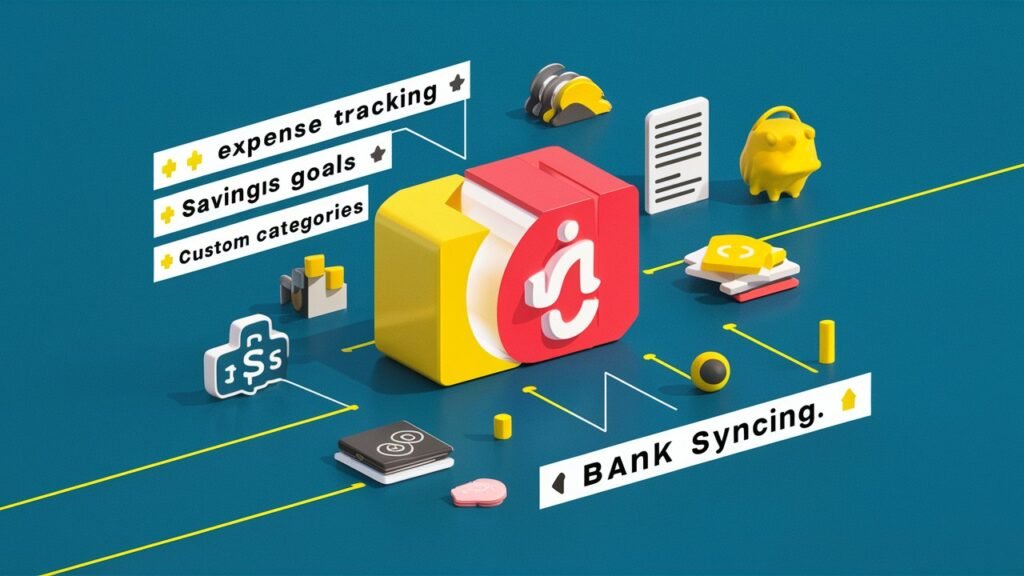
Section 4: Tips and Tricks for Beginners
1. Start Small and Track Daily
Keep it simple when starting off with a budget tracker app. Set small and manageable goals to avoid feeling overwhelmed. Track your spending daily to know where your money is actually going. This habit will keep you in touch with how you’re handling your finances and make any adjustments that warrant doing so.
2. Set Realistic Budget Categories
Establish realistic categories for your budget to fit your lifestyle. Examples include food, entertainment, savings, and transportation. Due to your needs and income, assign a percentage for each category. For example, assign 30% toward savings and 20% toward entertainment. It would be best to allow some flexibility in light of the changed financial circumstances.
3. Use Notifications and Alerts
Use notifications and alerts to the fullest in your budget tracker app. These alerts will definitely prevent over-spending by warning you when you are nearing a budget limit. Stay updated and in control, not late.
4. Review Weekly and Adjust Monthly
Maintaining a budget is a consistency issue, hence, make it a point to check your spending weekly to ensure that you are within budgetary limits. In this way, you’ll always have the opportunity to adjust your budget if something in your budget fluctuates and at the end of the month, you can compute your progress and make any further adjustments necessary to comply with your financial plans.
5. Leverage Reporting Tools
Most budget tracker apps are provided with powerful reporting tools in the form of graphs and spending insights. Use these features to analyze how you spend your money over time. Seeing where your money goes helps to uncover certain habits that can be used as guidance for future decisions, give insight for potential optimization of the budget, or unnecessary spending avoidance.
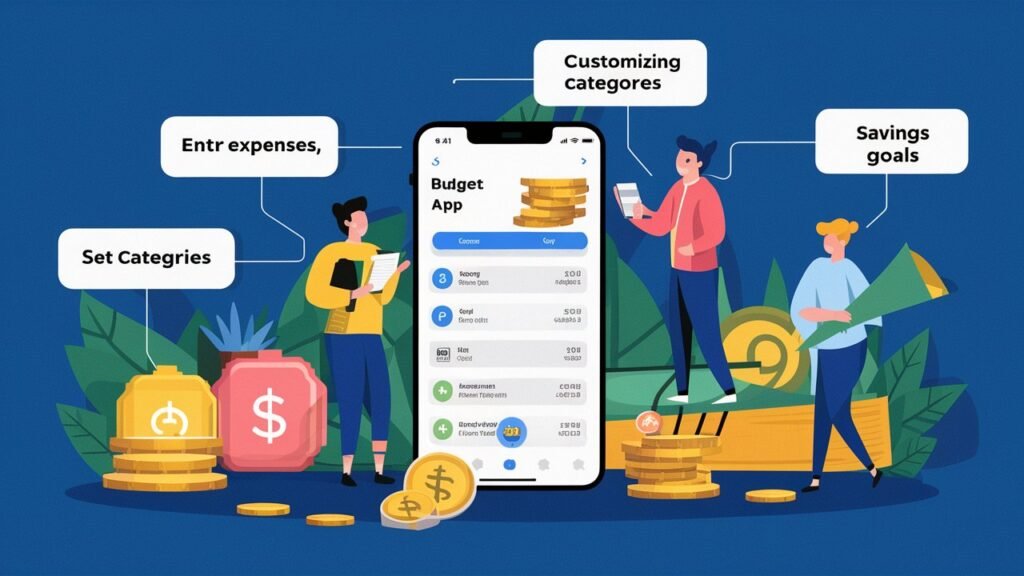
Section 5: Avoiding Common Mistakes
1. Over-Varying the Budget
Creating a detailed budget with countless categories can be confusing and overwhelming. Keep it simple and realistic, focusing primarily on your income, essentials, and savings. A budget that does not put excessive demands on your time is more likely to succeed in the long run.
2. Ignoring Small Purchases
For everyone, these small purchases occurring regularly may seem trivial, but adding them up could outsize any single expense. This may be as small as frequent coffee outlays or the treat here and there. Every cent you save counts because small leaks can ruin your finances.
3. Make Sure to Update Regularly
Failing to update regularly on your budget tracker might float inaccuracies, making it harder to ascertain the situation. A reminder to input fresh transactions and periodically check in on your progress will keep you on track and avoid nasty surprises at the end of the month.
4. Neglecting to Fund an Emergency Fund
Many beginners would leave emergency stipends off their priority list. Setting aside funds for emergencies means a reliable safety net preventing them from borrowing money when an unpredicted bill comes in. Set aside three to six months’ worth of living expenses for the sake of peace of mind.
What is the easiest way to keep track of a budget?
It really is the simplest form of ensuring a person stays on a budget by using an app to track it, as such apps let you set budgets, chase personal transactions, and monitor what you spend. Getting started is nothing difficult really:
1. Choose a Basic App: You could pick a simple and intuitive app featuring automatic transaction syncing and customizable categories. Possible choices are Mint, YNAB (You Need A Budget), and PocketGuard.
2. Link Your Bank Accounts: Link the application to your bank accounts and credit cards, thus automatically tracking and categorizing your transactions.
3. Set Budgets: Doiely allocate a reasonable budget to be set for different categories (say for groceries, entertainment, saving). The app will assist you to limit the categories.
4. Review Regularly: Check the app weekly to see what you’re spending and adjust if required. The app may also send reminders or alerts if you’re getting close to overspending.
5. Track Goals: Set goals and monitor your progress on saving for a vacation, paying off debt, or anything else.
What is the 50/30/20 rule of money?
Also quite an easy strategy for budgeting, the 50/30/20 rule is a concept that allows you to see how to effectively allocate your income. Here’s what it means:
1. 50% for Needs: 50% of your income should go towards all of your essential spending, which includes rent/mortgage, utilities, groceries, transportation, insurance, and other basic living necessities.
2. 30% for Wants: 30% of the total income should be allotted for wants that are unnecessary to survive but are nice to have, like having meals outside, entertainment, shopping, vacations, or visiting an amusement park and other hobbies.
3. 20% Principally Savings and Debt Repayment: The last 20% should go to paying off savings building (emergency fund, retirement accounts, etc) and debt outside of finances to pay down any debt (credit card debt, student loan debt, etc). This will ensure they are planning for the future while also managing their debt as a financially responsible American.
Conclusion
To summarize, these budget tracker apps will completely transform your financial management. They handle spending, setting savings targets, and tracking progress toward financial solvency. No matter whether you are a beginner or an experienced budgeter, there’s an app to ease the process of managing your finances and ensure you stick to it.
Now that you are aware of the best apps for budget tracking, let’s get started. Pick one that caters to your needs and begin budgeting right away. Be sure to share this guide with people who may benefit from it. Don’t forget to download one of the apps listed above and get begun on your financial journey!
FAQs – The Ultimate Guide to Budget Tracker Apps for Beginners: Tips and Tricks
- What is a budget tracker app? A budget tracker app helps you manage your finances by tracking income, expenses, and savings. It provides tools to set budgets, categorize spending, and analyze your financial habits.
- Why should I use a budget tracker app? These apps help you stay organized, avoid overspending, and reach your financial goals by offering insights into your spending patterns and progress.
- Do I need to link my bank account to a budget tracker app? Linking your bank account is optional but recommended. It allows the app to automatically track transactions and categorize them, saving time and reducing errors.
- Are there free budget tracker apps available? Yes, many budget tracker apps offer free versions with essential features. Some may offer premium features for a fee, but you can start with the free version to test them out.
- How do I choose the best budget tracker app for me? Look for apps that align with your financial goals, are easy to use, and offer essential features like transaction syncing, budget creation, and savings goal tracking. Try a few to find the best fit.
RELATED TOPICS
Top 10 Daily Financial Affirmations for Wealth and Abundance
Financial Stability through Mindfulness: How Mindfulness Can Enhance Your Financial Wellness

